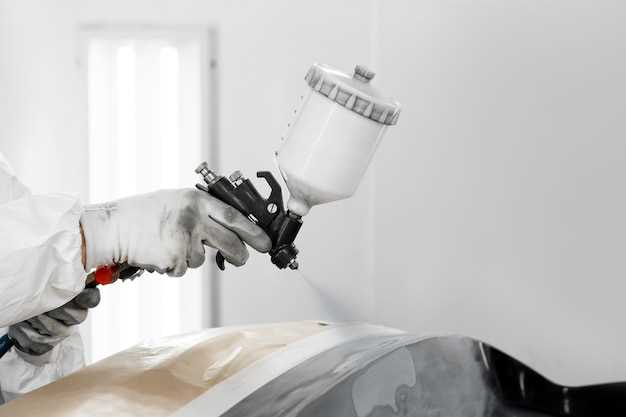
When it comes to selecting the ideal paint color for your sports car, the choice is far more than just a matter of aesthetics. The color you choose can significantly impact your vehicle’s personality, highlighting its design while also reflecting your personal style. A well-chosen color can enhance the car’s sleek lines and aggressive stance, making it stand out on the road.
Furthermore, it’s crucial to consider how the color interacts with the car’s performance characteristics. Bright, eye-catching shades can convey a sense of speed and energy, while more muted tones might evoke sophistication and elegance. Understanding the psychology of color and its effects can aid in making a decision that aligns with your vision for the car.
Additionally, the choice of paint affects how your sports car is perceived by others. Enthusiasts often gravitate toward vibrant and unique colors that accentuate the model’s features. Ultimately, selecting the right paint color for your car is about more than just looks–it’s an expression of your personality and a reflection of the passion you have for automobiles.
Understanding the Psychology Behind Color Choices for Sports Cars

The choice of paint color for a sports car goes far beyond mere aesthetics; it taps into deeply rooted psychological associations and perceptions. Color has the power to evoke emotions, influence behavior, and even shape social impressions.
Red, for example, is often associated with power, excitement, and aggression. This makes it a popular choice among sports car enthusiasts looking to showcase their vehicle’s performance and speed. The vibrant hue captures attention and can even enhance feelings of adrenaline, aligning perfectly with the exhilarating experience of driving a high-performance car.
On the other hand, blue conveys a sense of calmness and trustworthiness, often appealing to drivers who favor a more subtle and sophisticated approach. Blue sports cars may reflect a driver’s desire for reliability and control, characteristics that can be enticing when navigating sharp curves at high speeds.
Black signifies elegance, luxury, and a certain level of mystery. A black sports car often exudes a powerful presence, attracting attention and sparking intrigue. This color choice can be indicative of the owner’s confidence and ambition, making it a favorite in the luxury sports car market.
Conversely, yellow is a color that embodies cheerfulness and optimism. It stands out and is often associated with creativity and spontaneity. Drivers who opt for yellow paint may wish to express their adventurous spirit and willingness to embrace fun, making these vehicles highly recognizable and memorable on the road.
Apart from emotional responses, cultural influences play a significant role in color preferences. For instance, in some cultures, specific colors may symbolize success or status. Thus, the choice of paint color can act as a personal statement about one’s identity and aspirations as a sports car owner.
In summary, understanding the psychology behind color choices can greatly enhance the experience of selecting the perfect paint for a sports car. Each color carries its own unique set of associations that can reflect the owner’s personality and driving philosophy, making the decision not just about aesthetics, but a deeper expression of self.
How to Match Paint Color with Your Car’s Design and Style

Choosing the right paint color for your sports car is essential in enhancing its overall design and style. The color you select should harmonize with your vehicle’s aesthetic while reflecting your personal taste. Consider the contours and lines of the car; vibrant colors like red or yellow can accentuate aggressive design elements, while sleek shades such as metallic gray or deep blue may complement more refined models.
Next, evaluate the materials and textures present in your car’s design. A matte finish can provide a modern look, while gloss finishes can add depth and vibrancy. The choice of color here plays a critical role, as it can either enhance the texture or diminish it. For example, a matte black may suit a sporty coupe, while a glossy white could be perfect for a luxury convertible.
Also, take into account the age and era of the sports car. Classic models often look best in colors that were popular during their production, such as vintage green or cream. Modern designs can flexibly adopt bolder or unconventional colors, reflecting contemporary trends. This connection to the car’s history can add to its charm and appeal.
Finally, don’t forget to think about how the paint color interacts with the environment. Bright colors stand out on the road, enhancing visibility, while darker shades may create a sleek, stealthy look. Ultimately, your choice should balance personality, style, and practicality, ensuring that both you and your sports car make a statement on every drive.
Assessing Maintenance and Longevity of Different Paint Finishes
When selecting a paint color for your sports car, it is crucial to consider the maintenance and longevity of various paint finishes. Different types of paint, such as metallic, matte, and gloss, each have unique characteristics that affect their durability and upkeep requirements.
Metallic finishes often provide a striking look and depth, enhancing the car’s appearance. However, they can be more susceptible to scratches and swirl marks, necessitating additional care. Maintaining a metallic finish typically involves regular washing with pH-neutral soap and occasional application of sealants to protect against UV damage.
Matte paint finishes offer a contemporary aesthetic but require more attention. They are more prone to scuffing and can be challenging to clean without causing damage. To maintain a matte color, specialized cleaning products are recommended, and waxing is usually avoided to preserve the desired look. This finish demands consistent care to ensure it remains pristine over time.
Gloss finishes are the most traditional choice, renowned for their reflective sheen. They tend to be more forgiving when it comes to maintenance, as they are generally easier to clean and protect with wax or ceramic coatings. The longevity of a gloss paint can be impressive, provided it is maintained correctly, with regular washes and protective treatments against environmental elements.
Ultimately, the choice of paint color and finish for your sports car significantly impacts its maintenance regimen and lifespan. Understanding the attributes of each type will help you make a more informed decision that balances aesthetics and practicality.



